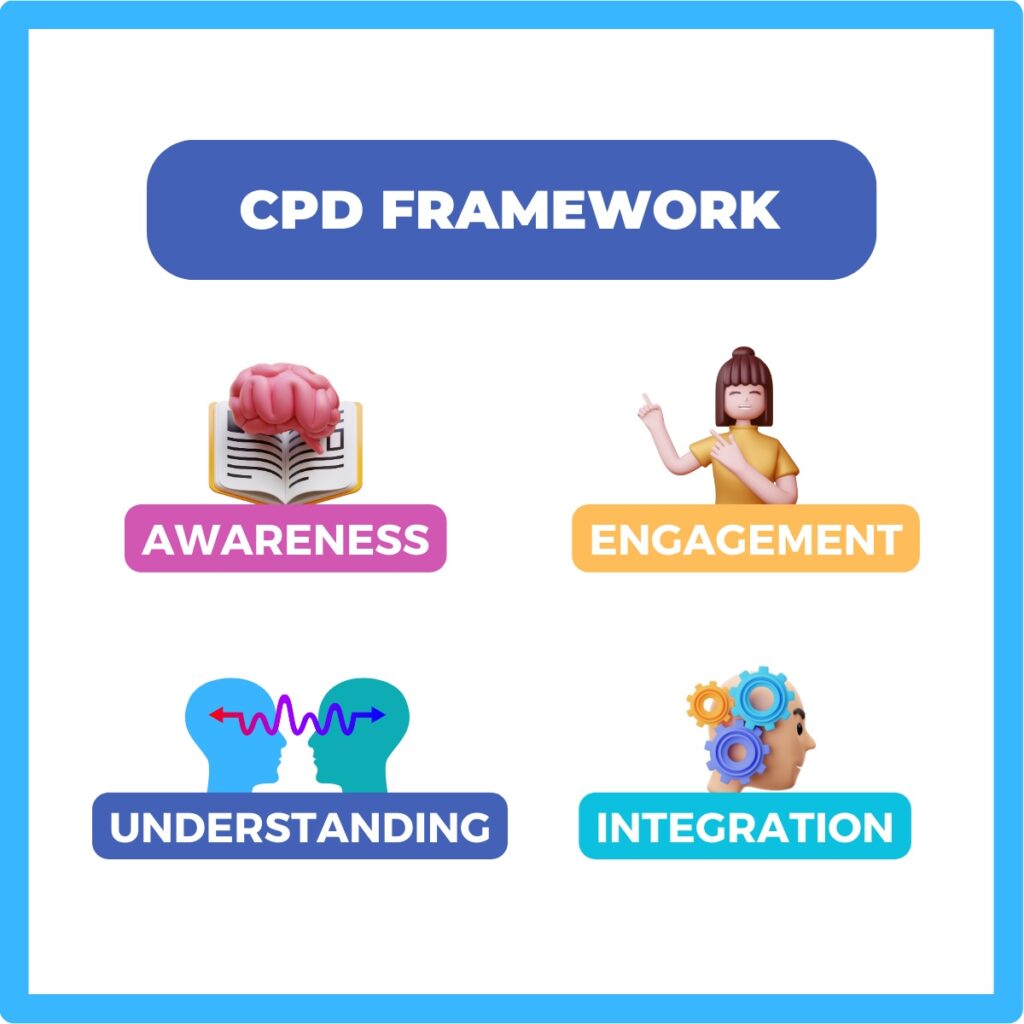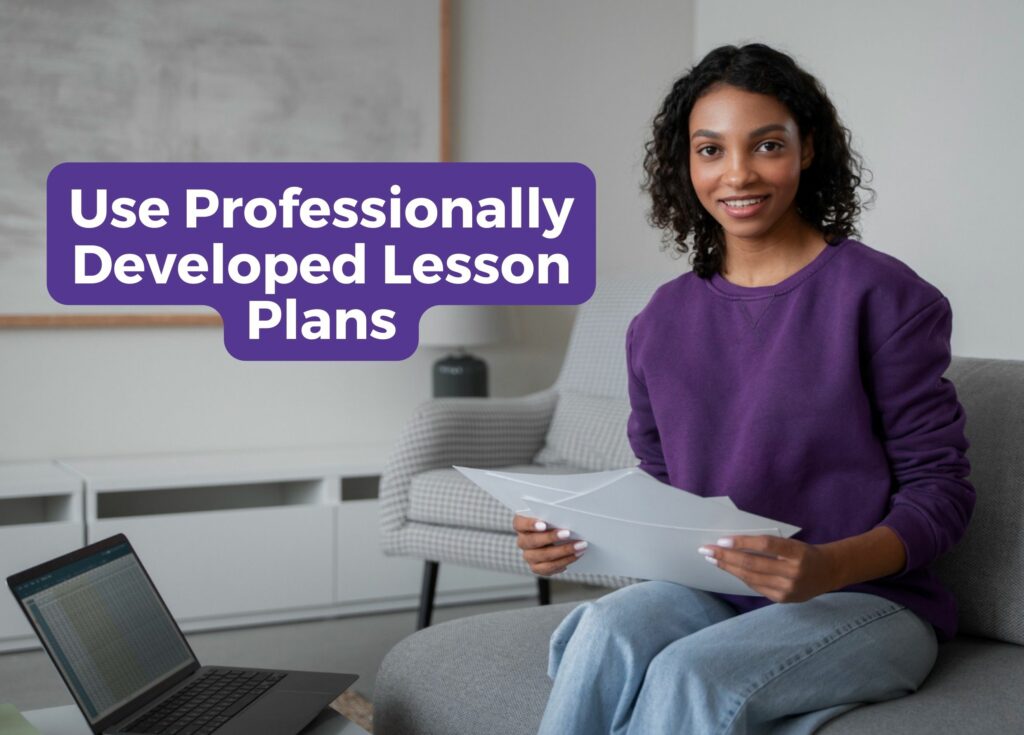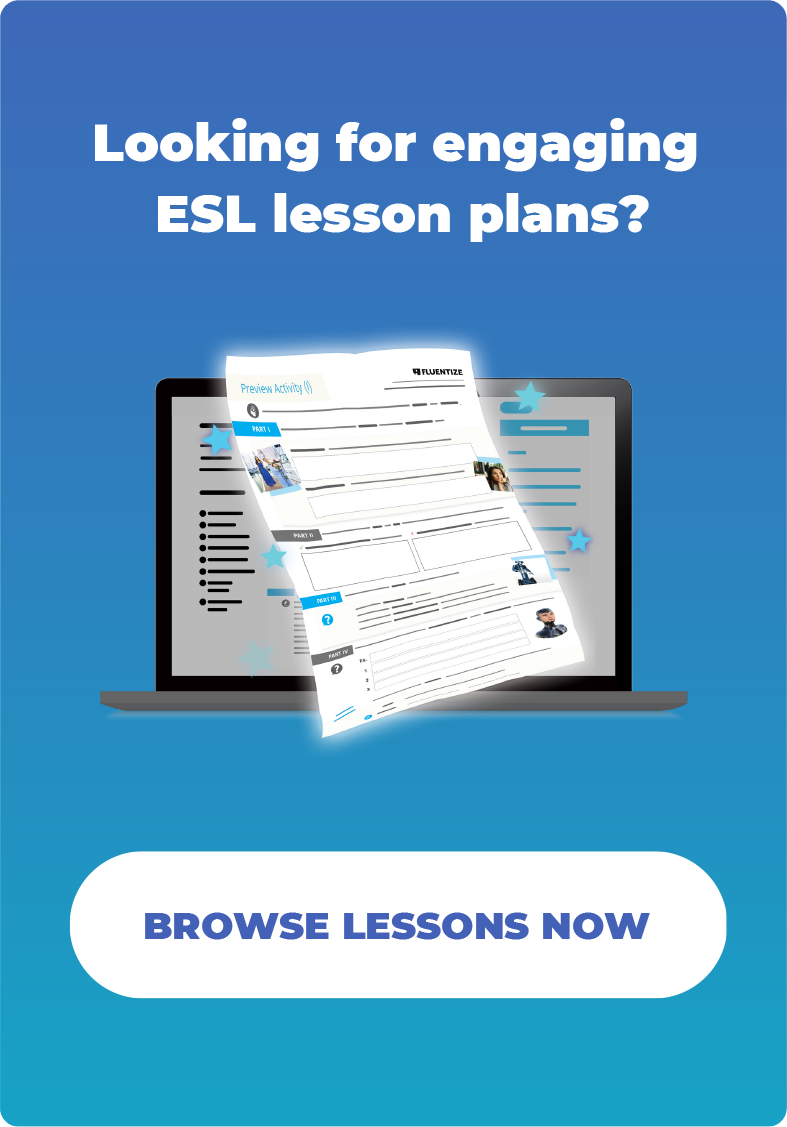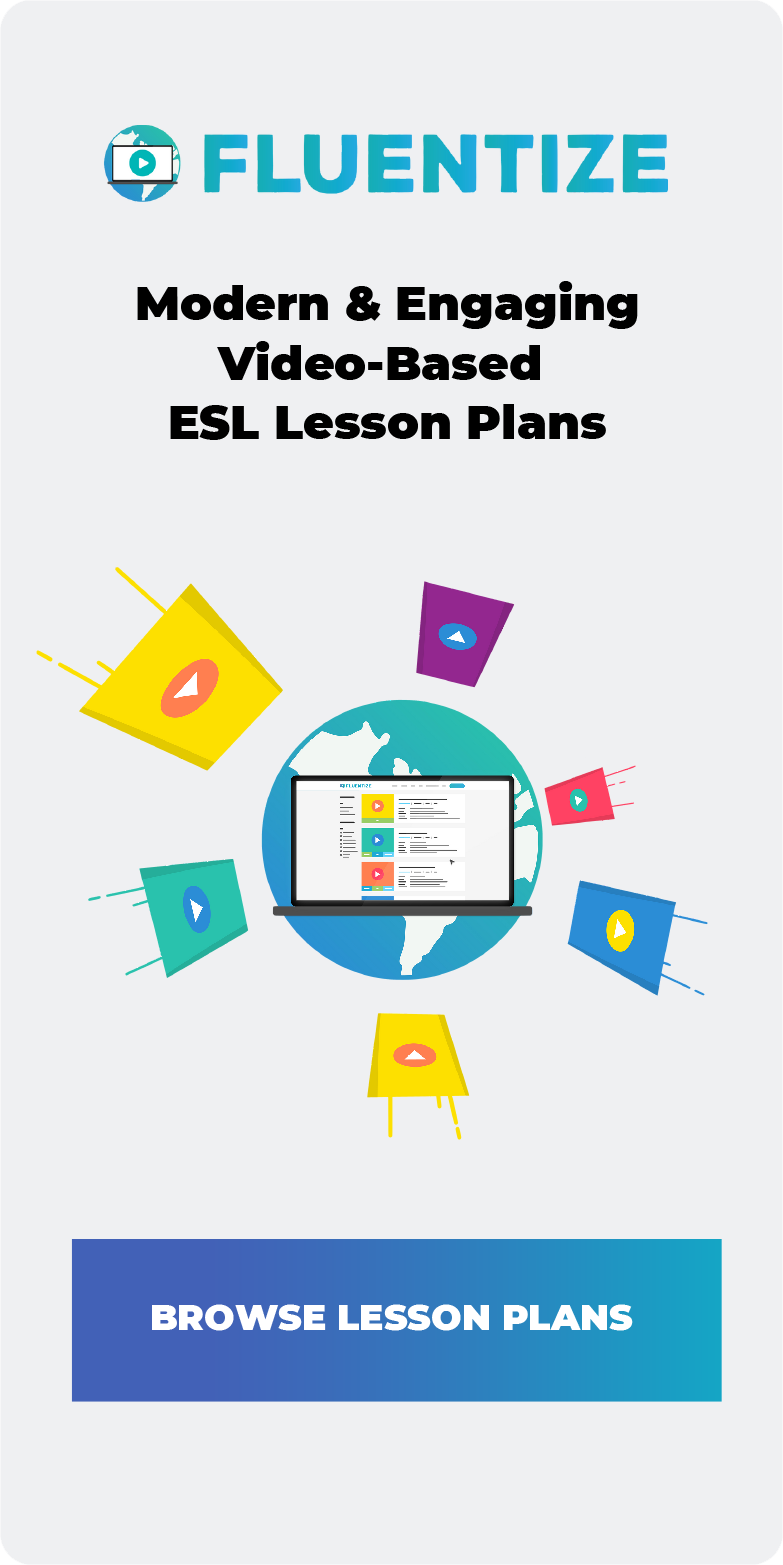Professional development for ESL teachers is about learning, growing, and gaining fresh perspectives. Here’s an interesting thought from linguist Penny Ur that reflects this idea:
“It has been said that teachers who have been teaching for twenty years may be divided into two categories: those with twenty years’ experience and those with one year’s experience repeated twenty times.”
Penny Ur (1996: 317)
Do you know what this popular quote by Penny means? Well, it means that some teachers grow and learn every year. They get better with time. On the other hand, some teachers don’t grow or improve. They repeat the same methods or systems over and over again without learning. But part of being a teacher should be about actively finding ways to improve. When we consider Penny’s idea, true experience means learning and growing, not just repeating.
Perhaps more importantly, teachers should want to improve and to seek new knowledge. And it’s important that schools make efforts to support teachers by providing training and resources. Both teachers and schools should work together, which helps everyone succeed. When teachers and schools improve their practices, students improve their skills.
What are the keys to professional development for ESL teachers?

The CPD framework for ESL teachers from the British Council has 4 stages: Awareness, Understanding, Engagement, and Integration.
In the awareness stage, teachers learn about a practice. Understanding means understanding the practice’s meaning and importance. Engagement is using the practice at work. Integration is showing high skill in the practice at work.
Overall, professional development is key for all ESL teachers. In this post, we suggest 17 effective and practical activities you can do to develop professionally as an ESL teacher. We want to help you grow and succeed. Let’s have a look!
1) Teach lessons
Getting teaching experience is the most important part of professional development. Teaching is what we do best, isn’t it? It’s at the core of a teacher’s job. It’s the space where we practice our skills and where we learn what works and what does not. Real classroom experience is the key ingredient for professional development. Nothing beats the feeling of seeing your students understand something new. It’s even better knowing you helped them get there.

Especially if you’re just starting as a teacher, one problem you might have is not knowing where to find opportunities. To overcome this, one first step could be to volunteer. You could teach at local ESOL centers or community centers. They often need volunteer teachers. By volunteering, you get practice and experience, which could prepare you for a paid teaching opportunity later. Websites like VolunteerMatch can help you find teaching opportunities. Alternatively, you can also consider offering free lessons to family, friends, or friends of friends.
If volunteering isn’t an option, Jake from Fluentize recommends platforms such as Italki and Preply, which allow teachers to connect with students around the world. These platforms review teaching applications quickly, and are generally great places for tutors to build a practice.
Therefore, if you need to get some real-world teaching practice, volunteering and submitting an application at an online tutoring platform are strong first steps.
2) Receive theoretical input (e.g., input sessions, lectures, etc.)
As a teacher, receiving theoretical input helps you learn new ideas. It gives you knowledge about teaching methods. As a result, you can improve your teaching and learn why and how certain techniques work. Then, you can apply these techniques in class.
Here is a list of common challenges teachers face when it comes to receiving input:
- Finding time for sessions
- Not having access to lectures or knowing where to get input
- Struggling to connect theory with practice
- Fear of stepping out of the comfort zone to try something new
To overcome these, you could consider several ideas:
- Watching online webinars. There are plenty out there these days (see point 14 below)
- You can also join professional groups on Facebook. These teachers’ groups offer resources and events, and are a great place to start.
- Checking out websites like Coursera and Futurelearn for free courses on teaching methods.
- Browsing the British Council TeachingEnglish website for free resources.
- Reading books (“The Practice of English Language Teaching” by Jeremy Harmer provides really valuable insights!)
- Attending local teacher training workshops
- Joining online forums to discuss theoretical ideas with peers. You could try browsing some Reddit forums about ESL teaching.
3) Plan lessons, or use professionally-developed ones
Planning lessons is a very important piece of professional development for ESL teachers. It can help you organize your thoughts, make classes run smoothly, and keep students engaged. Essentially, good planning prevents problems in class and helps you stay focused and on track. The more you lesson plan, the better you get at it, and the more you’re making progress in your profession.

Some teachers find lesson planning time-consuming. New teachers might feel overwhelmed when planning lessons. A good place to start is using professionally developed lesson plan templates or ready-made lesson plans. This can make things easier. Starting with simple lesson plans and asking experienced teachers for advice can also help.
Here is a list of ideas and tools you could consider:
- Google Docs and Trello are helpful lesson planning organizational tools
- Collaborative planning with colleagues
- Apps like Planboard can help with efficient lesson planning
- Breaking down the planning process into smaller steps can make it more manageable
- Ready-made lesson plans, like the ones we offer here at Fluentize
How do ready-made lesson plans help with professional development for ESL teachers?
Using ready-made lessons is effective because it allows you to reflect. You can assess the lesson plans, their structure, and try out new activities that you hadn’t considered before. This helps expand your toolkit. You can consider implementing some of the lesson activity styles in your own lessons in the future. It also encourages the use of new resources and technologies, which are important pieces of professional development for ESL teachers.
We also mentioned collaborative planning. Sharing lesson plans among colleagues might spark discussion, feedback, and collaboration on new ideas. When you experiment with new teaching methods, it can help you come up with new ideas and build professional confidence.
Overall, by exploring different tools and methods for lesson planning, you can enhance your skills and provide better learning experiences for your students. This aligns with the goals of professional development for ESL teachers.
4) Get observed and receiving feedback on personal teaching practice
Being observed helps teachers see their strengths and weaknesses. The purpose is constructive feedback and to learn you where you could improve. Sometimes, it’s tough to hear what you need to work on, but it’s worth it in the end. Just remember that it will help you grow and push you to become a better teacher.

Feeling nervous about being observed is common for many teachers. You might worry about criticism. To overcome this, you should see feedback as a learning tool. You can ask for observations from trusted colleagues to make it less stressful. Alternatively, asking a critical friend or another peer to observe is also helpful. When being observed, make sure your peers are using feedback forms to provide structured responses.
Remember, if you don’t have access to peer observation, you can also record your own lessons and review them. You can review them either on your own, or with mentors. You might want to join some peer observation groups, which can help normalize the process and reduce anxiety.
NOTE TO SCHOOLS: If you’re a school administrator or director, remember to create a supportive observation culture for your teachers!
5) Write self-reflective diary entries
Writing in a self-reflection diary can help you process your lesson experiences. It allows you to see what worked well. You can also identify areas to improve. As a result, reflection exercises help you become a better teacher. They’re key to continuous improvement.
But we know that finding time to write can be difficult. You might also struggle with being honest in your reflections. Just remember that professional development for ESL teachers is about opening up and being ready to grow. You want your reflections to be an outlet for this.
How can teachers fit reflection into their busy schedules? First and foremost, you can set aside a few minutes after each class. In this time, focus on both successes and areas for improvement. Here are some ideas to help you with this:
- Write in physical notepads or online, like Google Docs
- Use apps like Evernote to keep reflections organized
- Use reflection prompts to guide your writing
- Browse websites like Reflective Practice in Teaching to find useful tips
- Use online tools like Penzu for secure, private journaling spaces
- Share reflections with a mentor who can provide additional insights
Don’t overlook the value of reflective practices for professional development!
5) Research and write about language teaching/learning
Researching and writing are also effective methods for professional development for ESL teachers. They keep you updated on the latest teaching methods. These practices are likely to elevate your expertise. Writing reinforces your understanding and contributes to the broader educational community.

However, there are some difficulties involved. Research can take a lot of time, and teachers might feel unsure where to begin. Therefore, starting with small research projects can make it more manageable. Try using online resources and journals to simplify the process. You should also set specific goals to help manage time better. ELT journals like the ELT Journal, Modern English Teacher, or EL Gazette will provide valuable insights and good starting points.
When it comes to writing, you could write a blog or use LinkedIn’s blog feature. You can also write some social media posts of reflections from your lessons, experiences with your students, or tools or methods you’ve tried in your classes.
Finding other open-access journals and writing opportunities for ELT are also useful. You could:
- Explore websites like ERIC to access educational research papers
- Join professional organizations like TESOL for access to research publications
- Write articles for school newsletters or educational websites
Engaging in these research and writing activities can help you gradually build confidence and expertise.
6) Experience a foreign language lesson
Experiencing a foreign language lesson helps teachers understand what it feels like to be a student. It can help you learn new teaching techniques and build empathy with your students. This experience provides a fresh perspective on teaching. It’s eye-opening to sit in a student’s chair and face the same challenges they do.

Access to foreign language classes can be limited. How can teachers find ways to experience this? It’s understandable that you might feel uncomfortable to become a language learner. To overcome this, you can join online language courses. You could also pair up with colleagues to learn from each other. You don’t even need to take long-term foreign language classes or learn the language fully. You can simply pay a private teacher or join a group lesson for a few lessons only, like 5 lessons, to get a taste.
Take a look at Jake Young’s story about the founding of Fluentize. He writes:
“Developing my own foreign language skills was like killing two birds with one stone — learning a foreign language contributed to my own personal growth, which also indirectly contributed to my own students’ progress.”
Jake Young, Fluentize Founder
Additionally, websites like Duolingo offer free language courses. Teachers can also try platforms like Babbel or Rosetta Stone. Local community centers often offer language classes too. Language learning will improve your teaching and help you empathize with students, believe us!
7) Having one-on-one meetings with a mentor(s)
The advantage of mentor meetings is they provide tailored advice. The idea is to learn from your mentor’s experience, from someone who has experience and has made the mistakes already. These meetings are invaluable for professional development for ESL teachers. Personal guidance will help you overcome specific challenges. It’s like having a personal coach who understands your struggles and helps you navigate them.
Scheduling regular meetings can be tricky. Finding the right mentor might also be a challenge. Teachers should seek mentors within their network. Using online platforms for virtual meetings can ease scheduling conflicts. Websites like LinkedIn can help find suitable ELT mentors and teacher trainers. Once you have a mentor, platforms like Zoom and Teams facilitate online meetings. Teachers can schedule monthly or bi-weekly check-ins. Keeping a list of discussion points ensures productive meetings. Mentorship is an outlet for continuous learning and professional support. Therefore, we highly recommend that you seek out a mentor if you don’t already have one.
8) Reading specialized literature (e.g., course handouts, books, articles, etc.)
Reading specialized literature can deepen your knowledge as a teacher. It exposes you to new ideas and research. There’s always something new to learn and try out in the classroom.
However, you might find it hard to find time to read. Access to quality resources can be another issue. Setting aside or planning regular reading time should help. You’ll want to do this since staying informed about educational trends is very important.
Joining online forums or groups that discuss relevant literature is another option. Websites like Academia.edu and JSTOR provide access to academic papers. Teachers can subscribe to educational magazines like TESOL Quarterly. Reading blogs on platforms like Medium offers diverse perspectives. Participating in book clubs can also enhance understanding. Online libraries like Project MUSE offer extensive resources. Regular reading is a great way to keep teachers informed and inspired.
9) Observe course tutors or more experienced teachers
Observing fellow teachers and peers provides new insights. It shows different teaching styles and techniques and provides practical examples of effective teaching. Teachers can learn advanced techniques, which can help them improve their own methods. Learning from peers enhances teaching quality.

Some teachers might not have opportunities to observe others. They might also feel awkward asking for permission. Schools can arrange observation schedules. Teachers can also form observation groups. They can observe friends who are freelance teachers. Using platforms like Zoom to observe online classes is an option.
Asking for permission to observe classes during free periods can help. Teachers can reciprocate by allowing others to observe them. Discussing observations afterward provides deeper insights. Regular observation fosters a collaborative learning environment.
One challenge is that access to experienced teachers might be limited. Scheduling observations can also be tough. Therefore, teachers can try to watch recorded lessons of experienced educators. They can also attend workshops where such teachers demonstrate their methods. Websites like YouTube have many teaching demonstration videos. Attending conferences like IATEFL provides observation opportunities. Schools can arrange guest lectures by experienced teachers. Online courses often offer recorded teaching sessions that you can watch later.
Overall, watching experienced teachers in action is highly beneficial. Make sure to consider doing this for professional growth!
10) Get active on social media (LinkedIn, Instagram, Facebook groups)
Social media platforms connect teachers with peers worldwide. On social media, you can share experiences, ideas, and resources. This interaction fosters a supportive community. Networking online expands professional connections.
Teachers might not know where to start, or feel hesitant to join online groups. Starting with one platform, like LinkedIn, can help. Engaging in discussions and sharing experiences builds confidence and connections. Take some time to make connections with other teachers on LinkedIn and browse through your feed. Comment, share ideas, and try to be as active as you can be. The more you engage and connect, the more ideas and opportunities you’ll get for professional development.
Joining Facebook groups like the TEFL Development Hub offers support. Additionally, following educational hashtags on Instagram is another ideas. You might also consider participating in Twitter chats, like #ELTchat, which connects teachers globally.
11) Attend a talk or webinar
Attending talks and webinars keeps teachers updated. This will give you a chance to learn from experts and peers. As a result, you’ll broaden your knowledge and skills. Remember that continuous learning is crucial for professional development.

Finding relevant talks or webinars can be challenging. You might also find that scheduling is an issue. Subscribing to educational newsletters helps find events. You could also watch recorded sessions when live attendance is not possible. Places to find great educational webinars on ESL teaching topics are:
- TeachingEnglish British Council. They offer a variety of free educational webinars for ESL teachers.
- Trinity Transformative Teachers webinars
- Oxford FOELT and IATEFL monthly webinars
- Trinity and Regent College “Future of English Language Teaching” conferences are worth attending.
- Bridge Expert Series. They offer regular webinars on the latest trends in English language teaching from experts in the field.
- TeacherTrainingVideos with Russel Stannard
Regular attendance at these events keeps teachers informed and inspired. Try to be consistent make a goal to attend a webinar of interest
13) Give a talk or webinar
Giving talks or webinars is a great opportunity for professional development for ESL teachers. Firstly, you’ll get the chance to share your knowledge and enhance your communication skills. Public speaking is a valuable professional skill, especially in ELT.
There are some barriers, of course. The fear of public speaking is common, and you might feel that you lack expertise. Practicing in smaller groups first can help. If you prepare thoroughly and start with familiar topics, you should feel more comfortable.
To find opportunities, you can find calls for speakers in ELT conferences on websites like TESOL.org and be active on social media.
If you prefer the idea of in-person talks, local teacher meet-ups are another option to consider. Or, you can start by presenting at school events. Whether online or in person, sharing knowledge with peers enhances professional growth.
14) Record yourself teach via video
Recording lessons and watching them later provides valuable feedback. This can highlight your strengths and areas for improvement. It can also help you refine your teaching techniques.

You might feel self-conscious about being recorded. However, there are some things you can do to ease that. Start with short recordings to ease discomfort, and slowly build your way up to review full recordings.
Additionally, using simple recording devices or apps will make the process easier. You can do this face-to-face by setting up your phone in the classroom. You can also use Zoom to record lessons. Just make sure that your student knows your recording.
Remember that the discomfort will go away with time. Making it a habit helps a lot. Another thing you could try is reviewing recordings with a mentor. Hopefully, they could provide you with additional insights. The results of recording yourself teach can include better classroom management and improved teaching strategies.
Overall, self-observation is a powerful tool for growth that’s worth considering for professional development.
15) Action research for professional development for ESL teachers
Action research is when teachers become researchers in their own classrooms. The idea is to identify problems or areas for improvement. Then, you can test new strategies to see what works best. This process involves planning, acting, observing, and reflecting. It will help you understand your teaching and improve it.
Action research is simple. Teachers start by identifying a question or problem. For example, “How can I improve student participation?” They plan a strategy to address this, like using more group activities. They implement the strategy in their classroom. Then, they observe and collect data on its effectiveness. Finally, they reflect on the results and make adjustments.
This method helps teachers tailor their teaching to their students’ needs. It encourages continuous improvement and professional growth. For more information on action research, you can check out Anne Burns’s book, Action Research for Language Teachers. This publication offers practical guidance and resources for teachers interested in action research.
16) Join a teachers’ association

Joining a teachers’ association provides many benefits. It connects teachers with a community of peers. Here, you can share ideas, resources, and experiences. This support network is valuable for professional development for ESL teachers.
Teachers’ associations offer access to conferences, workshops, and webinars. These events provide opportunities for learning and networking. One benefit is that members often receive discounts on educational materials and resources. Associations like TESOL and IATEFL are trusted international communities. They offer a wide range of resources and events. Don’t forget about local associations. For example, BrazTESOL in Brazil, INGED in Turkey, and MEXTESOL in Mexico.
Being part of an association helps teachers stay updated on the latest trends and research. It provides opportunities for professional development, collaboration, online forums, and discussion groups. All these platforms allow you to ask questions and share advice with others.
Overall, joining a teachers’ association supports continuous learning and improvement. It fosters a sense of community and professional belonging. Teachers can find more information about these associations and join through their websites.
17) Spice up your teaching resume

If you’re looking for professional development tips and also in the middle of a job search, be sure you check and see what Jooble has to offer. Jake from Fluentize recommends that you carve out some time to clean up your resume using some of Jooble’s teacher resume examples here, or even their cover letter tips.
Final Thoughts on Professional Development for ESL Teachers
Have you tried any of these professional development ideas or activities before? If so, please let us know about your experience. If you have any other ideas to share, please let us know in the comments below!
Just like Penny Ur, we believe teachers should always strive to learn new things and avoid repeating the same mistakes. Learning helps you become a better teacher and keeps your teaching practice fresh! At Fluentize, we believe in supporting your growth. Explore our other blogs and lesson plans to keep improving your skills!










1 thought on “Expert Guide To Professional Development For ESL teachers”
Great post! Professional development for ESL teachers is essential, and I love how you shared practical ways to stay updated and motivated. Super helpful and inspiring!